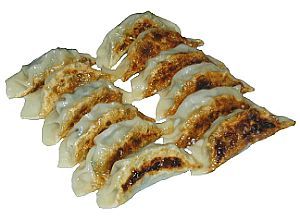We really loved living in Japan. My wife Palmarin and I met there, it’s where I launched my career, and where I made the best friends of my life. To say that was a “special” time is a vast understatement: it was THE seminal experience in my adult life, and I wouldn’t trade the experience for anything.
That said, after 5 years in Japan we’d reached the point where things weren’t fun and exciting anymore, and we were eager to come home -- a state many of our expat friends said they were in as well. Most of us expats were eager to get on with the next stage in our lives: many were heading into graduate school, others were making career changes, and still others were just looking forward to getting away from the high cost of living and crowded conditions of Tokyo. Just before I left, I had lunch with a friend, Brian, and the topic of what it would be like to move home came up as it had with so many expat friends. He asked me that day to write about my experience re-assimilating once I got back home. So, after postponing this missive for 15 years, I’m finally writing about what I learned as a former expat. Sorry for the delayed response, Brian!
When we moved back, we really enjoyed the things we had missed: easily accessible outdoor activities, low-cost options for nearly everything, and the career/ education opportunities. I have no regrets about living in Japan, nor about moving back when we did. But I found it hard to answer Brian’s question, “what’s it like to move back,” at least at first. I remember trying to write this article in the months after moving back, but then concluded that I just didn’t have enough perspective yet. It seemed I needed more time after the “honeymoon period” of moving back home had worn off to really make an account.
What I remember the most was how ill prepared – psychologically – we were to make the move. In some ways we felt it would be very easy slotting back into the US lifestyle, and in many ways it was. Still what we didn’t realize is that to move “back home” is as stressful as any move ever is. All the anxieties, transitions and adjustments that come with moving from one country to another (or even one city to another) still apply when you move back “home.” So if you’re an expat who is planning to move home soon, get as mentally ready as you would for a move overseas. Even if you’re moving back to the same home you lived in before, your neighbors may have changed, the neighborhood may have changed, familiar places you once knew will probably have changed. And, the people you knew have probably changed too.
I have to say that one thing was a little disappointing: how little most people – both educated and not-so-educated – cared or “got” what a life-changing experience living overseas was for us. Shortly after returning I was having lunch with a friend and I mentioned what a large transition it was to move to Japan, adjust to life there for 5 years, and then move back home. He attempted to empathize, saying “I know what you mean. It was a huge adjustment for me when I moved from LA to San Francisco.” Wow, I didn’t say. It isn't like that at all. And I wonder if anyone really can "get it," unless they too have been there ... and back again.










